Guest Post by James A. Payne, Principal, Liberty Point Elementary School
Recently the Georgia Governor’s Office of Student Achievement recognized our school as a “Beating the Odds” School for the second consecutive year. This distinction is awarded to schools that are able to perform better than statistically anticipated by defying the uncontrollable characteristics of a school’s student body, its location, and the barriers that the community where the school sits may face.
We’re often asked what our magic pill is and what we can offer to other schools to replicate our progress we’ve made. After much reflection and the retracing of actionable steps, we can confidently offer that Liberty Point Elementary antecedent to our many accomplishments thus far happens to be the use of classroom libraries to enhance the teaching and learning process during our literacy blocks. We are extremely proud of the current culture that now exists in our building where books are seen as one of many necessary tools that are pivotal to student achievement and the overall success for our students.
Liberty Point ES is a shell of its former self. The many shifts, changes, and resulting transformation did not occur over night, impulsively, or without calculated risks. As we look back on our journey and the path that was taken, we have been able to identify the steps we took towards leveraging classroom libraries to increase both student achievement and more importantly—student engagement in reading. It was these changes that took a well below average elementary school and transformed it into the current institution of responsive teaching and learning that has consistently made it its business to grow students by the numbers and allow students to enjoy reading while doing so.
The Knock That Jumpstarted It All
Once making much needed gains after several years of yielding subpar results, we knew that we could not continue to do the same work we once did with the expectation of better results. Our efforts had reached a plateau and we needed to level up with a refreshed view on literacy instruction for our students. With budding knowledge of Reading Workshop and its tenants of succinct mini lessons followed by an extended independent reading time, we sought to find a school that could operate as our model. We needed to see our new literacy goals in action.
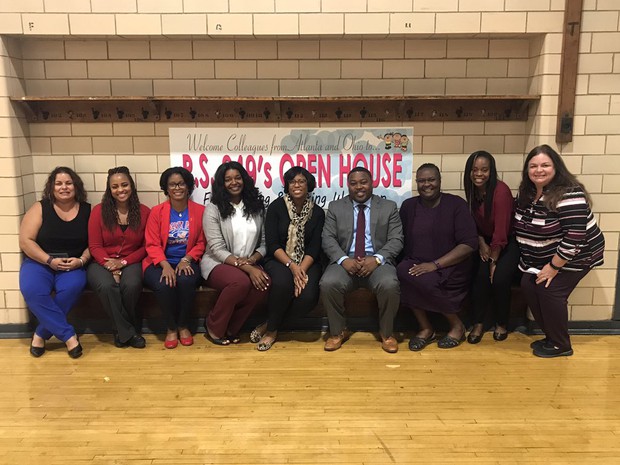
Principal Payne and his team visiting PS 249 Caton Elementary School in Brooklyn, NY
Believe it or not, our confirmation that we needed to get high interest books in the hands of our students came from multiple knocks on the principal’s door during a visit to our practitioner mentor school. The team that we brought to the school happened to be in the principal’s office collaborating with members of the host school. As we were knee deep in conversation about Reading Workshop and its impact, it was hard to ignore the number of knocks on the principal’s door. These interruptions were not due to the principal’s secretary delivering news of student misbehavior or parent complaints. These knocks were from anxious students who were stopping by to inquire about new books in the principal’s book stash. In between knocks it was explained that it was the culture of the building for the students to casually stop by the principal’s office to get the latest titles and apparently word was out that more books were in building. At that point of our visit nothing else needed to be said or showcased to us. We wanted in on this culture of independent reading for our students back home and we were sold!
Money Talks
Coming back from our school visit, we were on fire for change for the better! We hit the ground running planning for the following year well before our students even left for summer vacation. That planning process began with our school budget. We knew that if we firmly believed the work of Reader’s Workshop, we had to put our money where our mouth was and invest in more high interest books for students. We also knew that if we really wanted to make an impact our students needed readily access to the books without a pass to the school’s media center.
Therefore, we made the bold decision to utilize much of our school budget to outfit all of our rooms with a classroom library. In our eyes, it was a nonnegotiable.
There wasn’t a need for programs and reproducible workbooks to take our readers to the next level. Therefore, we had to stand our ground on not making purchases for Reading instruction that were not in alignment of authentic reading practice using high interest books that were accessible to our students. In addition to purchasing new books, we also did a book sweep of our building. All bookrooms were emptied and any lingering books found from the remnants of former instructional programs were collected and reassigned to a home within a classroom. In addition, teachers were challenged with seeking assistance with the collection donated books through sites like Donors Choose. All efforts were in alignments with making a way possible with equipping our students with books with their reading personalities and the curriculum in mind.
Leveraging Teacher Leadership
Our next step involved utilizing teacher leadership to spark a fire in our teachers. As much as the administration knew the benefits of the classroom libraries, we needed our teachers, the ones who were going to execute the use of the classroom libraries to understand our why behind our new work. It was important to have a shared vision in order to launch the work further and much longer. We encouraged the reading of professional development selections like Donalyn Miller’s The Book Whisperer and Reading in the Wild. We knew if beliefs began to change, instructional practices would follow suite. Our teachers needed to understand the importance on providing choice without limits that tend to be driven by levels.
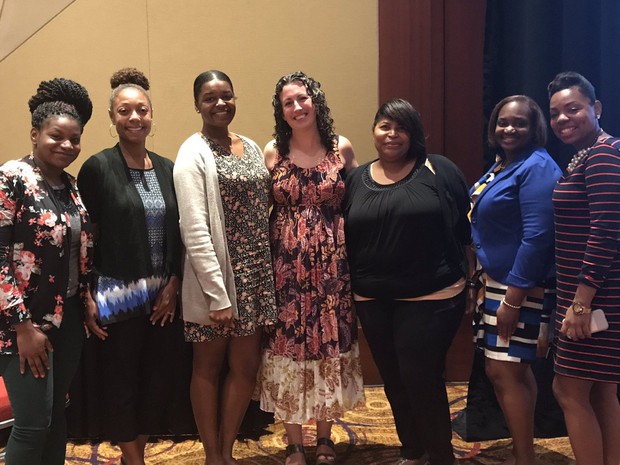
Liberty Point Elementary School’s instructional coach and teachers with Jennifer Serravallo
It was our due diligence to help the teachers to understand that reading silently is not a wasted time or even a gap filler. It is one of the most undervalued investments we can make in our school day for any child, any age. If we wanted children to become better readers, then we knew we had to give them the time to read and books they actually wanted to spend time with doing so. Ultimately, we had to band together a group of teachers who accepted that classroom libraries would operate as the classroom’s beating heart and this sentiment had to spread like a wildfire across our building.
Creating Parameters for Success
The final step for the implementation of the use of classroom libraries involved the re-creation of our literacy frameworks and instructional schedules. Prior to the return of our teachers from summer vacation, we had classroom libraries in place and teacher buy-in brewing. However, it was essential that we furthered the planning for success up front by setting clear expectations of the student use of the classroom libraries.
With knowing that reading volume was the key to our next success, we had to provide students with protected time to develop their stamina to keep working through a text even when it presents challenges. We knew it would be difficult to build stamina and reading independence during our former station rotation model. Our kids deserved time to apply skills and struggle a bit, applying all that we would teach them in an authentic format. Therefore, we provided an instructional schedule that was conducive to student use of the books as a part of the literacy instructional block. We also created a framework of instructional expectations that illustrate via descriptions the role of both the teacher and student during our literacy block as it relates to independent reading and the volume of reading that should be happening in classrooms across the building. Having the success criteria for teachers helped to focus our teacher planning for execution for the long run and ensure that we had systems in place to ensure the classroom libraries would leave an impact on our students to last a lifetime.
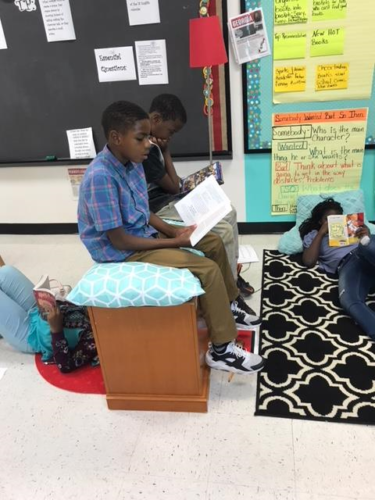
Liberty Point students engaged during reading workshop
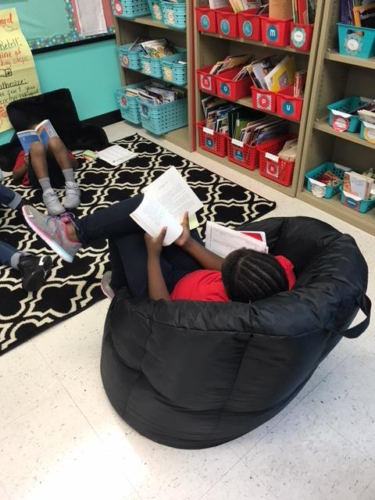
Writing workshop in a Liberty Point classroom
Looking back, Liberty Point Elementary students’ reading comprehension and ultimately test scores remained stagnant prior to the purchase of our viable classroom libraries. It’s safe to say some causes included our teachers and students over relying on core reading program, spending much time on isolated skills work, and students reading few texts they actually enjoyed.
We knew we wanted our students to become lifelong, comprehending, and inquiring readers so we saw fit that most of our reading time be sustained time for reading mostly texts students self-selected through the use of classroom libraries. With the use of the classroom libraries, we have a double-digit decrease for students who were assessed as reading below benchmark and double-digit gains for our students who have been assessed as reading above grade level. The demand to continue to refresh our libraries with new titles has not subsided. Our students are able to articulate their favorite genres of books and enjoy engaging in dialogue about the books they are reading without a detail to spare.We are not out of the woods just yet, but we are certainly moving in the right direction.
About the Author:
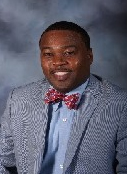
Mr. James Payne, a native of Adel, Georgia, is an innovative leader who has served in education for 11 years. He is a leader whose reputation for student achievement precedes him well. Upon receiving his Bachelors of Science Degree in Early Childhood Education from Georgia Southern University, Mr. Payne gained his first experiences in school leadership in the Fulton County School System. As principal, assistant principal, data support specialist and teacher leader, he affected positive change for students in the classroom and built the capacity of teachers throughout the Fulton County School District. In 2011, he was named a Georgia Master Teacher for demonstrating excellence in student achievement and student growth on state mandated standardized tests.
As an assistant principal, Mr. Payne has enabled students to realize their full potential. Under his leadership at Renaissance Elementary School in Fairburn, Georgia, the school made a 16.6 point gain on the College and Career Readiness Performance Index. In 2014, 90 percent of fifth grade students met or exceeded expectations on the Georgia Writing Assessment. The school has also achieved notable gains in Math, Reading, English Language Arts, and Science.
In his current role as of principal of Liberty Point Elementary School in Union City, Georgia, he has helped lead the efforts to remove the school from Georgia’s failing schools list. Under Mr. Payne’s leadership the school has improve it’s overall letter grade from a F rating to a C rating .
Mr. Payne is a life-long learner. Through Troy University, he earned his Master’s and Specialist degrees in Curriculum and Instruction. He obtained his leadership certification from Georgia State University. During his course of study, Mr. Payne continually pursued his interests in curriculum design and school leadership.


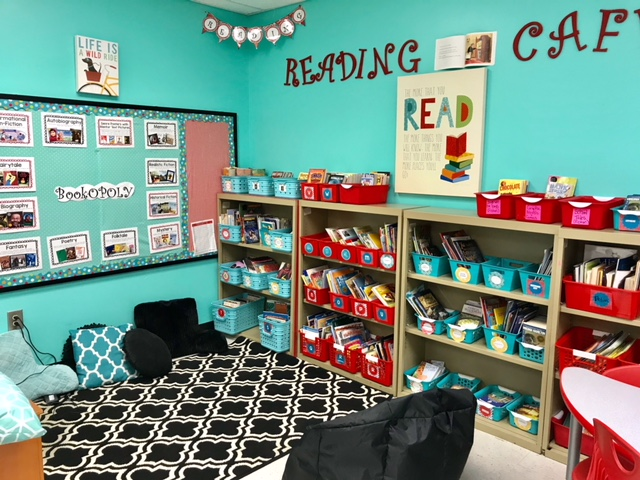
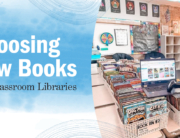
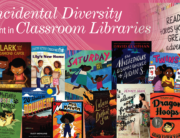

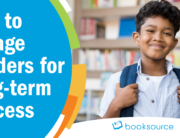
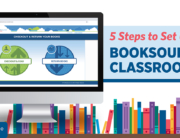
Awesome! Proud to be a Patriot!!
So proud of this principal! Go James Payne!
Dr. Massey
Sometimes you have to make a “RADICAL CHANGE” that will allow our kids to let their light shine!
Mr. Payne, this is very well written and worth reading.
Keep passing the torch